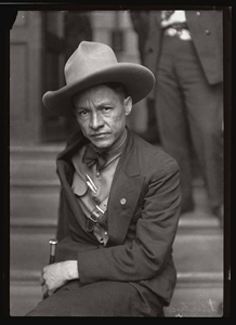Product Description
George Manupelli “AC Sandino” Silk screen poster c. 1970


GEORGE MANUPELLI (1931-2014) USA
“AC Sandino” Silk screen poster c. 1970
Silk-screen with black and red ink.
This stylized “Ben-Day dot” technique image of Augusto Cesar Sandino (AC Sandino (1895-1934) was a Nicaraguan revolutionary and guerrilla leader), the poster is float mounted in a white gold leaf edged frame.
Signed: george manupelli (in ink below image) and in pencil script below black inked printed name
Poster dimensions: H: 35″ x W: 23″
Framed dimensions: H: 41 1/2″ x W: 29 1/2″ x D: 2 1/2″
George Manupelli was born in Boston’s North End in 1931. A pioneer in experimental film since 1955, he has exhibited and won awards internationally including the 1964 Venice and 1965 Sao Paulo Biennials. He recently received and Avant- Garde Master Award for his Dr. Chicago films. He holds a Doctorate Degree from Columbia University (1959), and has taught at the University of Michigan, York University, was Dean of the San Francisco Art Institute, and was a Fellow at the University of Illinois Center for Advanced Studies. Manupelli founded the Ann Arbor Film Festival in 1963 and directed it for 17 years. He was also a member of the music theatre ONCE Group. His many films are in the archive of the Anthology Film Archives in New York City.
***This print is made from a 1930s photo of revolutionary Augusto Sandino.
George Manupelli “AC Sandino” Silk screen poster c. 1970
JAN DE SWART (1908-1987) Netherlands / USA
Mystery box c. 1970
Hand carved and assembled box form with a curiosity element of a large turquoise cabochon with raw hide wraps underneath the lid.
For more information see: Jan de Swart: A Day That Becomes a Lifetime, exhibition catalogue (California: Fine Arts Gallery at the San Fernando Valley State College, February 1972); Jan de Swart, Mike McGee and William G. Otton (Laguna Beach, California: Laguna Art Museum, 1986).
W: 16 1/2″ x H: 4 1/2″ x D: 5″
Price: $4,700
Constantly seeking and inventing new materials Jan de Swart was a true modernist. He was influenced by artists such as Isamu Noguchi, Harry Bertoia, Charles Eames, and later Sam Maloof and Wendell Castle. Although he had been creating small sculptures since his arrival in California from Holland in 1929, he had not been widely recognized until being introduced to John Entenza, publisher of Arts & Architecture magazine in 1947. Soon thereafter, he was able to create larger works and began collaborating with architects such as Whitney Smith and Victor Gruen on special commissions. His work is in the permanent collection of Los Angeles County Museum of Art, The Smithsonian, and the Ford Foundation. He was honored with the American Institute of Architects Gold Medal for Sculpture in 1965.
TIM LIDDY
“Game of Boom or Bust” (1951) Presidential Sweepstakes 2006
Oil and enamel on copper, plywood back
Signed in script: Tim Liddy “circa 1951” 2006, red circular ring
Provenance: William Shearburn Gallery (St. Louis, MO)
H: 15 1/8” x W: 15 1/8” x D: 2”
With his recent paintings, Liddy has both reasserted the construct of hyperrealist painting and developed a thoroughly unique advancement of that mode by extending the cultural reality of the indexed original. Based on the illustrated box lids of vintage board games, Liddy has recontextualized a subject, which evokes the underlying rules of life. Painted on copper or steel in the precise dimensions of the original, the metal is then manipulated to demonstrate the exact rips and tears from years of usage and includes trompe-l’oeil renditions of the scotch tape that might be holding the cardboard box together, the assorted stains, or the various graffiti of time. Liddy leaves no possibility of ambivalence, these works speak to a concurrent understanding of their original object identity and to themselves as works of art engaged in historical and psychological dialogue.
